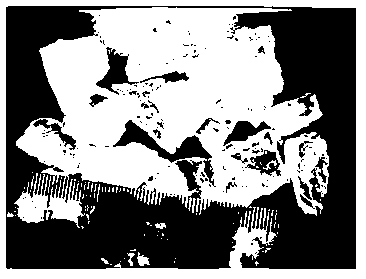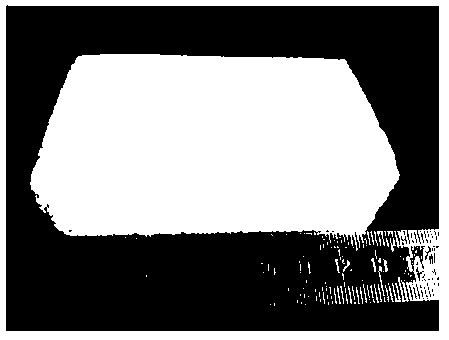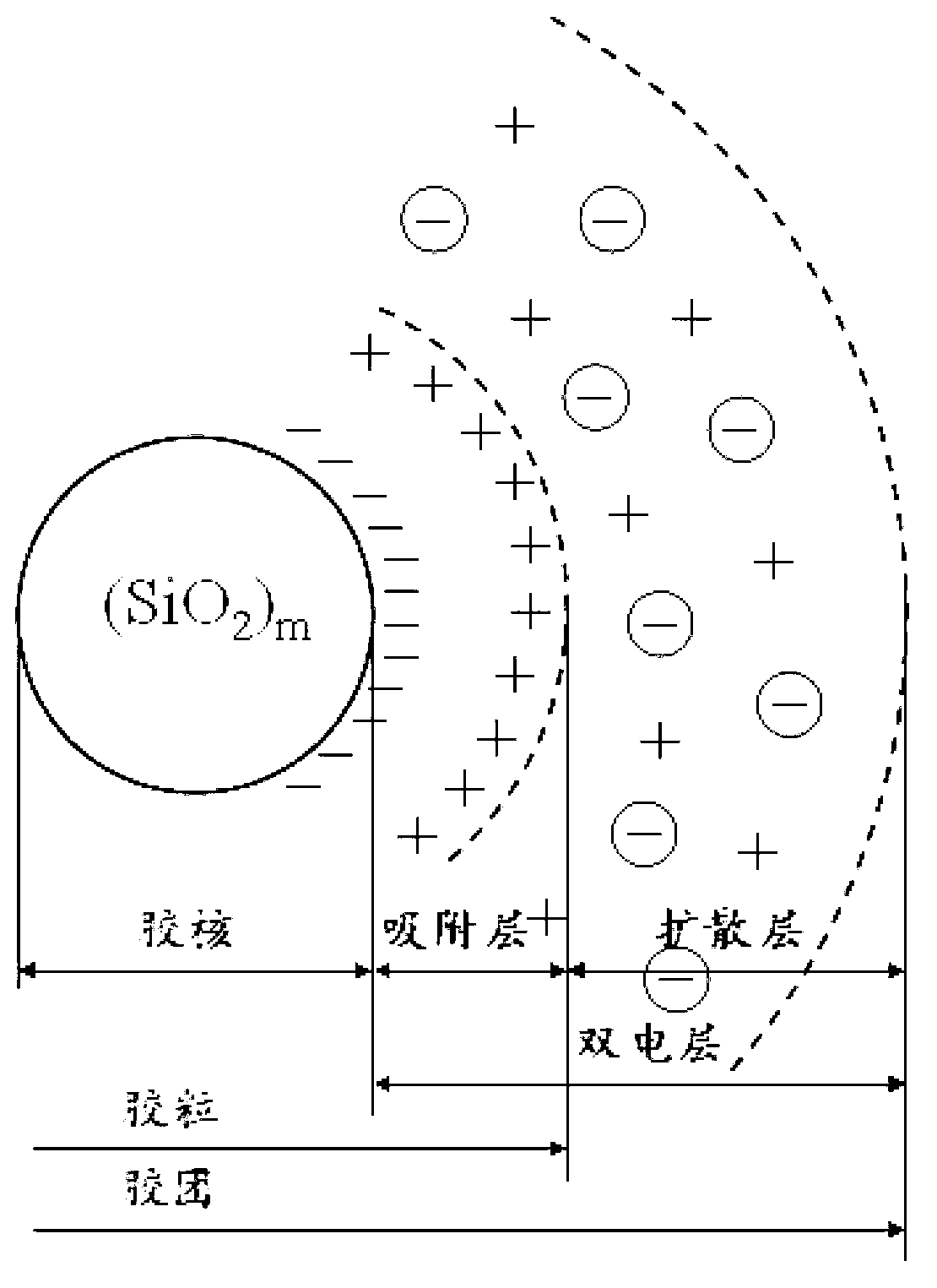Low-temperature foam glass thermal insulation material and preparation method thereof
A technology of foam glass and thermal insulation materials, applied in the field of low-temperature foam glass thermal insulation materials and its preparation, can solve the problems of uneven bubble diameter, uneven distribution, and poor chemical stability of porous materials, and achieve low water absorption, uniform distribution, and low cost. cheap effect
- Summary
- Abstract
- Description
- Claims
- Application Information
AI Technical Summary
Problems solved by technology
Method used
Image
Examples
Embodiment 1
[0038] A series of experiments were carried out using liquid sodium silicate with a modulus M=3.3 and a solid content of 35% and boric acid as raw materials. The specific raw material proportions and main component mass fractions in formulas A, B, C, and D are shown in the table below:
[0039]
[0040] The raw materials of each formula were mixed evenly with forced stirring to obtain a high-viscosity sol system without gelling; then the sol system of each formula was dried at 120°C for 12 hours to obtain an intermediate material with a moisture content of about 30%. ; In order to finally obtain the same bulk density of different formulas (the bulk density of low-temperature foam glass is controllable, the design bulk density here is about 160kg / m 3 ) low-temperature foam glass samples, and then put the broken intermediate materials of each formula into the mold, seal the mold and move it into the oven; finally, the temperature was raised to 300°C at a rate of 10°C / min and ...
Embodiment 2
[0047] The experiment was carried out with liquid sodium silicate with a modulus M=3.3 and a solid content of 35%, boric acid and aluminum dihydrogen phosphate. The formula by weight is water glass: boric acid: aluminum dihydrogen phosphate = 100: 4: 2, and the mass fraction of the main components in the raw materials is: SiO 2 70.32%, B 2 o 3 5.13%, Al 2 o 3 2.53%, Na 2 O 22.02%.
[0048] The raw materials according to the above proportions were mixed evenly with forced stirring, and a high-viscosity sol system was obtained without gelling; then, the sol system of each formula was dried at 100°C for 8 hours to obtain a sol system with a moisture content of about 25%. Intermediate material; then put the crushed intermediate material of each formula into the mold, seal the mold and move it into the oven; finally raise the temperature to 300°C at a rate of 15°C / min and keep it warm for 5h, then cool down at a cooling rate of 10°C / min to room temperature to obtain low-te...
Embodiment 3
[0053] The experiment was carried out with liquid sodium silicate with modulus M=3.3 and solid content of 35%, boric acid and KOH as raw materials. The formula by weight is water glass: boric acid: KOH=10:4.51:3, and the mass fraction of main components in raw materials is: SiO 2 63.42%, B 2 o 3 6.06%, (Na 2 O+K 2 O) 30.52%.
[0054] The raw materials according to the above proportions were mixed evenly with forced stirring, and a high-viscosity sol system was obtained without gelling; then, the sol system of each formula was dried at 110°C for 16 hours to obtain a sol system with a moisture content of about 40%. Intermediate material; then put the same amount of intermediate material of each formula after crushing into the mold, seal the mold and move it into the oven; finally raise the temperature to 300 °C at a rate of 5 °C / min and keep it for 2 hours, and drop the temperature at a cooling rate of 2 °C / min to room temperature to obtain low-temperature foam glass.
...
PUM
| Property | Measurement | Unit |
|---|---|---|
| Density | aaaaa | aaaaa |
| Compressive strength | aaaaa | aaaaa |
| Thermal conductivity | aaaaa | aaaaa |
Abstract
Description
Claims
Application Information
 Login to View More
Login to View More - R&D
- Intellectual Property
- Life Sciences
- Materials
- Tech Scout
- Unparalleled Data Quality
- Higher Quality Content
- 60% Fewer Hallucinations
Browse by: Latest US Patents, China's latest patents, Technical Efficacy Thesaurus, Application Domain, Technology Topic, Popular Technical Reports.
© 2025 PatSnap. All rights reserved.Legal|Privacy policy|Modern Slavery Act Transparency Statement|Sitemap|About US| Contact US: help@patsnap.com



